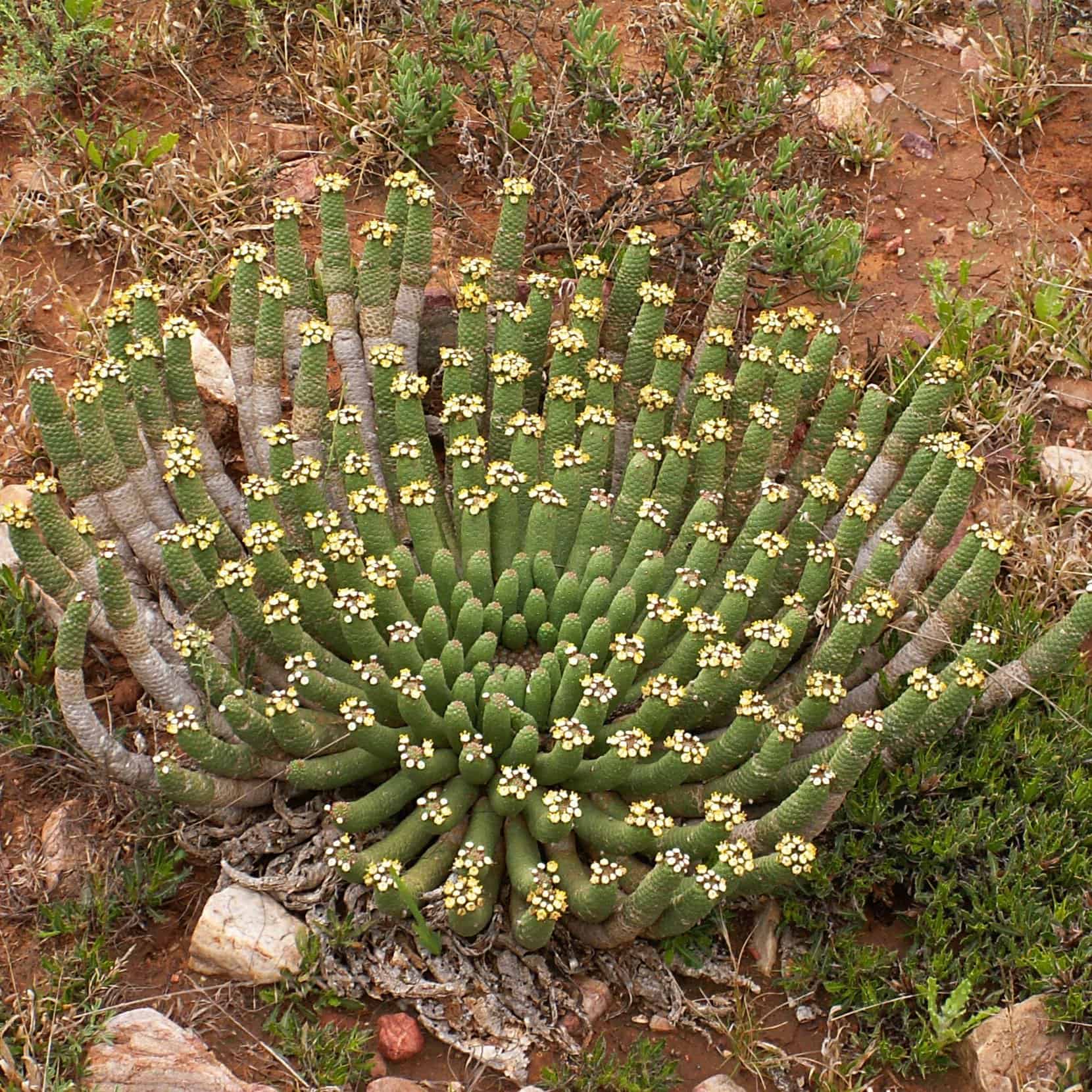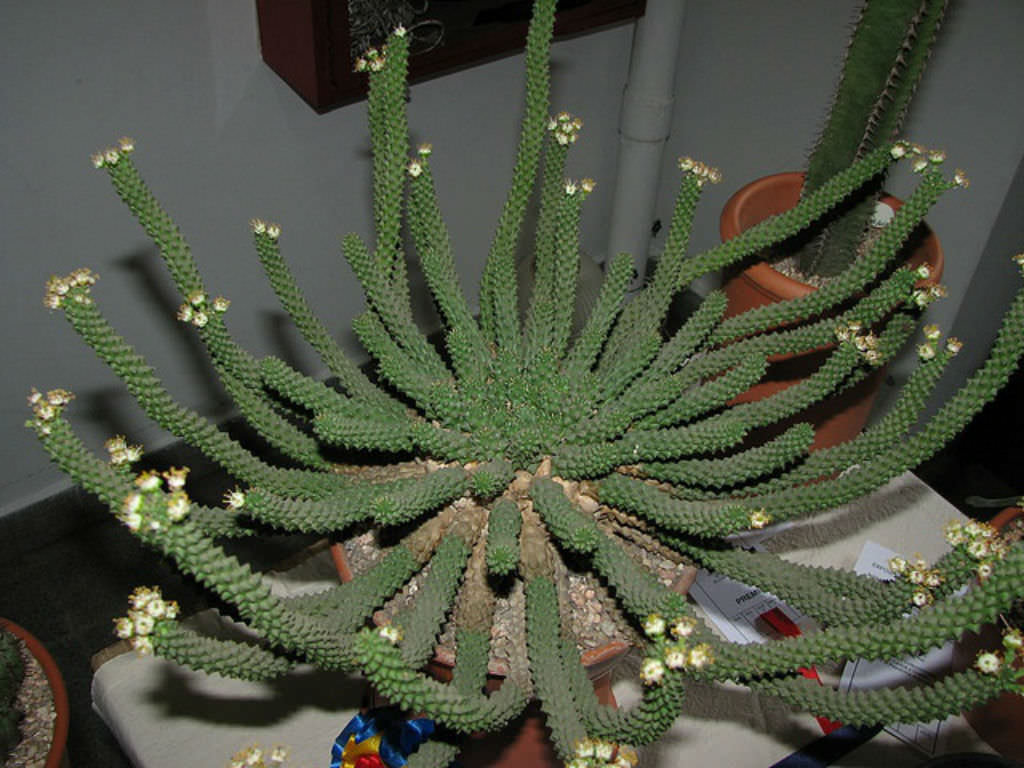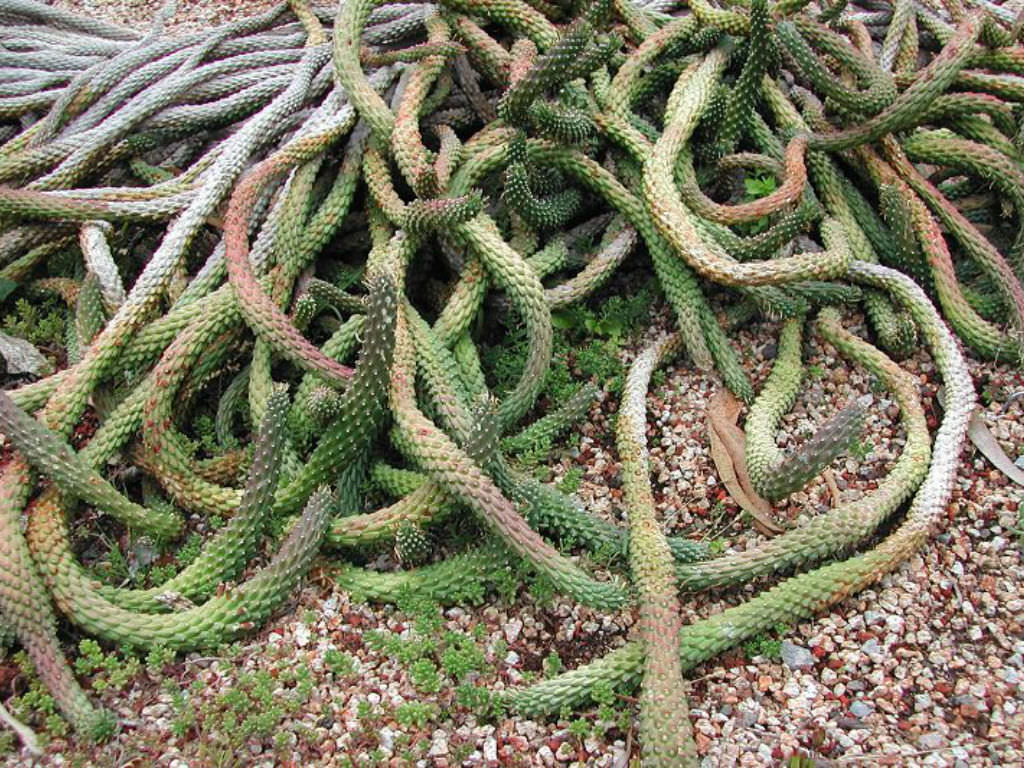
PlantFiles Pictures Euphorbia Species, Medusa Head (Euphorbia caput
Euphorbia caput-medusae: An evergreen cactus / succulent with blue and green foliage and red flowers in spring and summer. To grow well, it prefers sun - bright shade and occasional - low water. Drought tolerant once established. Prefers to be dry in winter. Grows best in well-drained, lean, average and gritty soil. In need of something heat tolerant?

Euphorbia Caput Medusae Desert
Medusa's head Euphorbia became popular in the Netherlands around the 1700s. In 1753, Carl Linnaeus recorded the Caput-Medusae euphorbia in his book, Species Plantarum. Medusa's Head Care Size & Growth. Medusa's head euphorbias can grow up to be 1′ - 2′ feet tall. At the center, it has a deep-rooted caudex almost 8" inches in diameter.

Euphorbia CaputMedusae Growing The Exotic Looking Medusa Plant
Medusa's Head (Euphorbia caput-medusae) is a succulent plant which resembles the head of Medusa, with many serpent-like stems arising from a short, central caudex. It has numerous gray-green, bumpy-textured branches up to 90 cm long with a knobbed terminal end where small deciduous leaves are produced. White flowers bloom on short stalks.

Euphorbia caputmedusae World of Succulents
Euphorbia caput-medusae: I discuss this first as this is the classic medusoid Euphorbia. It is a moderately large plant with a large, thick cylindrical caudex (stem) from which dozens, if not hundreds of long, thick, tubular arms extend in a radial pattern from the caudex.

Euphorbia caputmedusae Yellow flowers of Euphorbia caput… Flickr
Euphorbia caput-medusa e L. Curtis's Botanical Magazine t. 8673. Raimondo, D. et al. (2009). Red List of South African Plants 2009. Strelitzia 25. South African National Biodiversity Institute, Pretoria. World Checklist of Selected Plant Families (2010). Euphorbia caput-medusae.

FileEuphorbia caputmedusae 2.jpg Wikimedia Commons
EuphorbiA cAput-mEdusAE Introduction In the mid 1980's while discussing the E. caput-medusae complex with late colleagues of mine, David Hardy and Larry Leach, they suggested that it would be useful to look at E. caput-medusae especially to unravel the exist ence of the original type. At that stage I was working
Euphorbia caputmedusae "Medusa's Head" Euphorbia
About Medusoid Euphorbia. Medusa's Head plants are part of Medusoid Euphorbias, a group of succulents native to South Africa. The botanical name of the Medusa's Head species is Euphorbia caput-medusae, which makes it the only species that actually refers to Medusa, the Greek mythology figure, in its scientific name.

EUPHORBIA Caput Medusae Tulbagh Tree & Plant Nursery
Potentially harmful. Genus. Euphorbia. Genus description. Euphorbia can be annuals, perennials, shrubs or succulents, with milky sap and small flowers held within cupped, often colourful bracts. Name status. Correct. Advertise here. Find help & information on Euphorbia caput-medusae Medusa's head from the RHS.

Euphorbia caputmedusae (other name inermis) in 23 cm pot. This plant
Medusa's Head euphorbia is suitable for growing outdoors in USDA hardiness zones 9b through 11. Euphorbia requires at least six hours of direct sunlight per day and tolerates temperatures in the low 90s (33-35 C.). However, afternoon shade is beneficial in hotter climates, as extreme heat may stress the plant.

Euphorbia Caput Medusae Desert
Euphorbia caput-medusae is a sprawling, succulent shrub, reaching 1 m across. It has a rosette of narrow, snake-like, spineless but knobbly branches, each 10-30 mm in diameter that arise from a short woody stem (caudex) and which rapidly lose their leaves . The remaining narrow, fleshy leaves and a cluster of inflorescences are carried at the.

Desert Plants and Wild Flowers Images Euphorbia caput medusae
Propagating Euphorbia Caput-medusae from seeds is a great way to produce new plants without relying on cuttings or divisions. It's important to look for healthy, dark and plump seeds that are slightly sticky when touched. The soil should be pre-mixed with well-draining potting mix, before evenly sowing the seeds and pressing them into the.

Euphorbia caputmedusae Medusa's Head World of Succulents
The Euphorbia caput-medusae (Medusa's Head) likes to be watered when the top of the soil is dry, so use a soil mix that drains excess moisture quickly and holds onto some moisture for a few days. Temperature for the Euphorbia caput-medusae (Medusa's Head)

Photo of the entire plant of Medusa Head (Euphorbia caputmedusae
Euphorbia caput-medusae (Medusa's Head) - This unique South African native succulent has a central tap-rooted caudex to 8 inches wide from which emerge numerous snake-like gray-green bumpy-textured branches to 3+ feet long with a knobbed terminal end where small deciduous leaves are produced. White flowers bloom on short stalks rising from the.

Euphorbia Caput Medusae Desert
Peter Walkowiak is one of the premier grower of medusoid euphorbias (among many other succulents and cacti). This is just a slice of the plants he shows and sells. A mature, clustered example of Euphorbia woodii mimics an undersea anemone colony. Euphorbia caput-medusae has a remarkable and long-lived flowering period.

Euphorbia caputmedusae Google Search Cactus flower, Planting
The Medusa head is one of the earliest plants documented by Linnaeus, Euphorbia caput-medusae. It was brought to the Netherlands between the 1700s. The plant's name, Medusa head, refers to how the crowns of its white and yellow flowers mimic those of the mythical figure Medusa.

Euphorbia caputmedusae World of Succulents
Plant Highlight: Euphorbia caput-medusae. April 2007. Euphorbia is a very large and widespread genus, ranging from tiny plants up to stout-trunked trees. Some kinds are pernicious weeds, while others are botanical treasures which are prized by collectors. Amongst the desirable members of the genus, a considerable number are succulent.